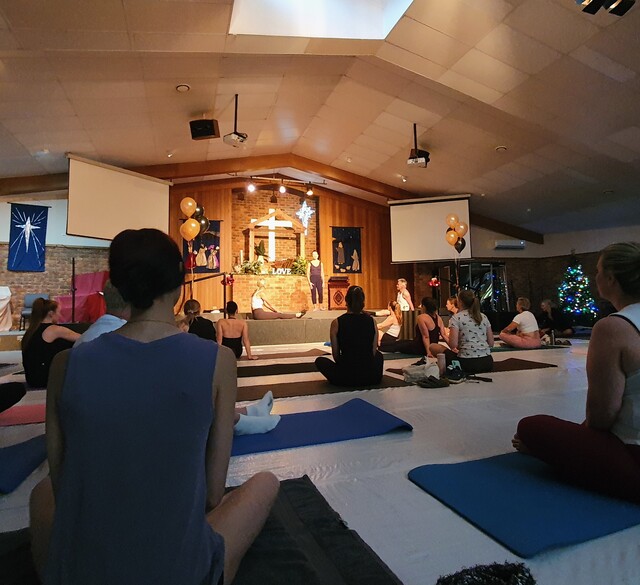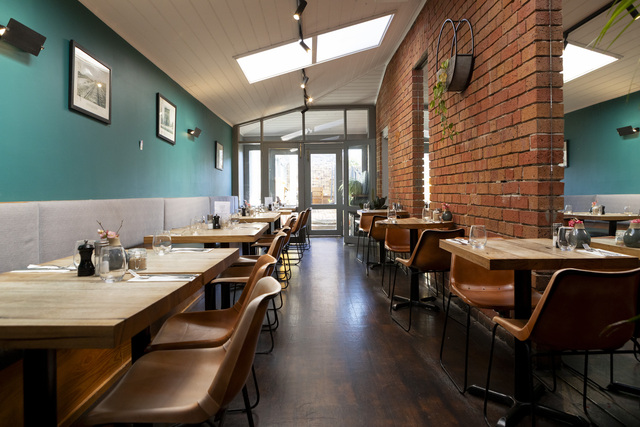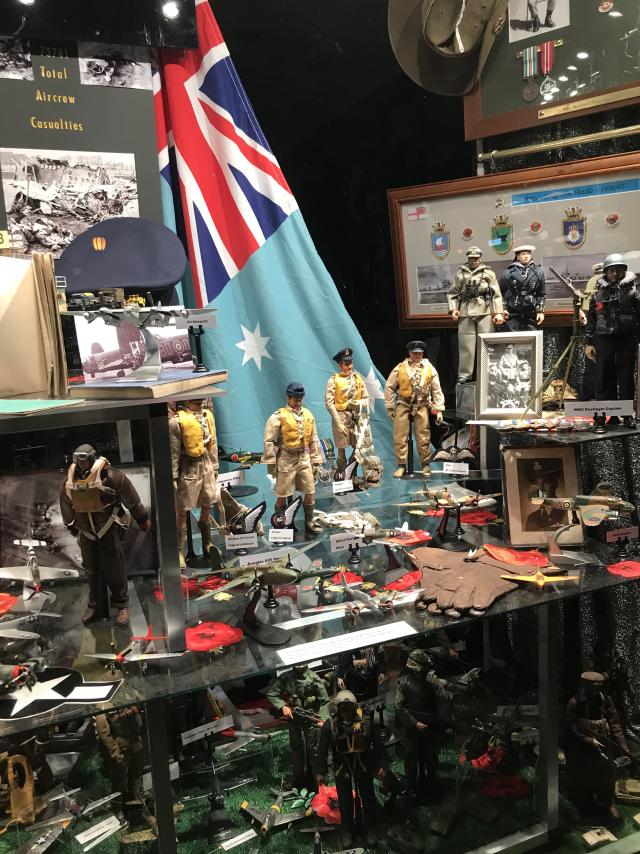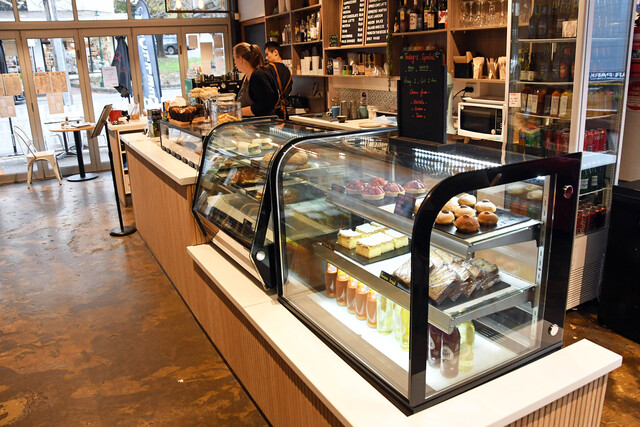By Kath Gannaway
PHIL Giddens was captain of the Coldstream Fire Brigade in February.
Looking back – and he has done a lot of that – he says two things stick in his mind of the experiences of Black Saturday and the weeks after.
“One, it could have been a hell of a lot worse,” he said of the fires which his and other brigades battled and contained around Tarrawarra Road to the north of Coldstream, to the east of the highly populated housing estate, and further into Gruyere.
“It could have spotted right through to Mount Evelyn and on to Mt Dandenong and the whole of the Yarra Ranges could have gone.”
On another front, there were fears the fires would be swept on a south-west wind through the back of Badger Creek and Healesville.
A wind change eased that concern.
The second is about the experience of being a firefighter.
Some of the older volunteers have been through major fires – Ash Wednesday, the Canberra fires and others – but for some at Coldstream, and hundreds in neighbouring brigades, it was the first, brutal confrontation with what Mr Giddens calls “the beast”.
“As a fire-fighter, it made you realise exactly what the beast can do to you if you don’t watch it.
“If you don’t respect it, it will bite you, and bite you bad,” he said.
“We all train for that.”
It makes sense of the repetitive training volunteer fire-fighters are personally committed to, and required to do.
“My guys said it just became second nature,” Mr Giddens said.
“They knew what to do without having to think. That’s where that repetitive training pays off.”
Coldstream had trucks on the strike team to Gippsland, out at Steels Creek, the Train Track and Tarrawarra Road fires which came through Domaine Chandon and Punt Road wineries, at Healesville and in their own patch where they were fighting to protect their own homes and those of neighbours, friends and families.
The brigade spent two weeks after Black Saturday creating dozer containment lines and blacking out around the Coldstream area to protect the Warburton Highway and Dandenongs.
He paints an awe-inspiring picture of the fire as a physical entity.
The smoke was so thick beneath the high-voltage power lines at Coldstream that the electrical current was sparking through the carbon-laden smoke and earthing, causing spot fires. At Domaine he said he was in his car when the flames jumped over his vehicle and caused the engine to boil. He also watched the blaze jump 40-foot high shedding, destroying the bottle plant in its wake.
From a hill-top at Yarra Grange he could see where the fire had created its own thunder storm, creating lightening strikes through the smoke.
Radio traffic from Mount St Leonards tower was delivering the bad news to Yarra Glen captain Bill Boyd as Mr Giddens surveyed the valley from the hill top.
“Yarra Glen captain, you have multiple strikes in Steels Creek …” he recalls the spotter’s words.
He could see the fire spreading. “You know when you drop oil on water and it spreads … it was just like these rings of flame everywhere,” he says.
The radio traffic was intense.
“I said, ‘Billy, you’re getting hit all around and he just came back ‘I know, it’s everywhere’.”
Coldstream fire-fighter Graham Brown was in Steels Creek with the pumper crew.
“He would have been hearing all that,” Mr Giddens said, reflecting on the affect of the experience on his crew.
Mr Brown has been a volunteer firefighter for 27 years but the predictions a couple of days before to expect Armageddon were fulfilled.
“We expected hell that day and we got it,” he said.
The wind on Black Saturday was the crucial element.
“We’d had 40-plus degrees days leading up to it and it was stinking hot but we didn’t have the wind.
“On Black Saturday it came in at 45 and with it there were horrendous winds. It’s a huge factor in the way a fire runs and spreads and the intensity of the fire.”
Responding to situations as they made their way along Gulf Road and into Steels Creek Road, the Coldstream crew went to the aid of residents battling the flames – one woman bucketing water on to the fire, trying to save her house.
They were told then that 40 people were trapped at Yaleena Vineyards.
Although the main fire front had gone, the people, surrounded by smoke and burning trees, were too scared to leave.
“We spoke to them and told them ‘you have to get out’ but they were saying it was just too dangerous.
“I said I’ll lead you down to Yarra Glen; wind up your windows, follow us and don’t stop.”
As they moved on to help tackle the fires burning to the south of Yarra Glen – behind the railway station and through the billabongs to Yering, they heard on the radios “Coldstream had gone up”.
Mr Brown said the experience knocked him about.
“It’s the first time in 27 years as a firefighter I’ve become emotional,” he said.
“I think it was the magnitude of it. I just thought, when is this going to stop; it was just so intense.”
As they were engrossed in the chaos of Steels Creek, Mr Brown said the wind change that ultimately destroyed Narbethong and Marysville, and came close to destroying Toolangi, came through.
They were at Balgownie and he recalls thinking “thank God” because that change took the fire around the back of the vineyard.
“What happened with wind change came from south-west, then changed heading, as we know now, towards Marysville.
“I can’t say I thought of what that might mean at the time. There is a lot between Dixons Creek and Marysville; we had houses burning as we were going past, we got a call to people supposedly trapped in Steels Creek Road with trees down.
“It was just chaos.”
He said everyone has their own way of dealing with the trauma and for him it is a loving wife who he can, and does, talk to.
And it’s the brigade.
“The guys in the brigade are just like a family, we all look after and support each other,” he said.
“I got a few cuddles from the guys after I’d had a bit of a sob.
“You put your life on the line with them and you become a close family,” he said.
“You can fall back on them.”
Mr Brown, now First Lieutenant with Coldstream, and its long-standing treasurer, said, despite, or perhaps because of Black Saturday, he’s in the brigade for the long haul.
“I like to think I’m there to look after the community and I enjoy the camaraderie of the brigade.”
The horror of the blaze beast
Digital Editions
-

Pilates fundraiser exceeds goal for Stable One
A local pilates fundraiser, The Hundred for the Homeless, organised by instructor Vicky Kamakaris, has far exceeded its initial goal of $1000, raising an impressive…





